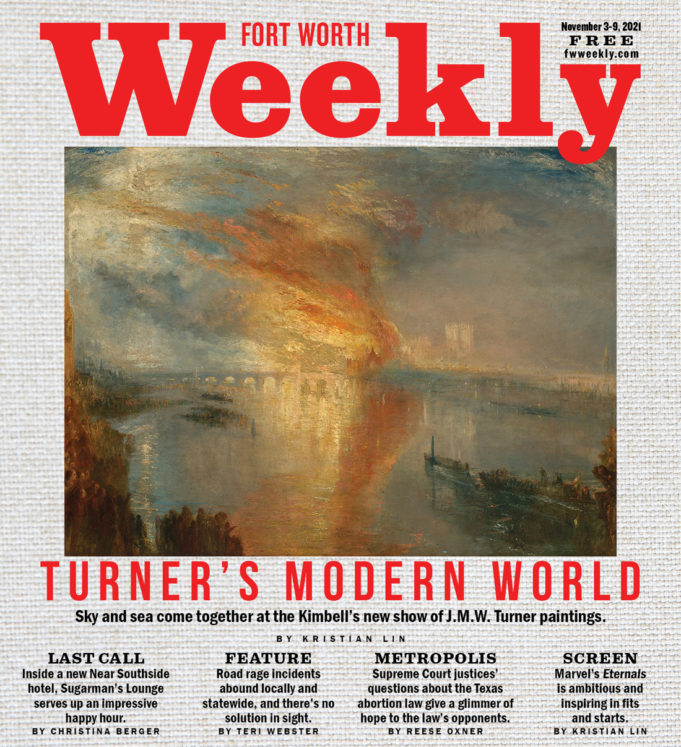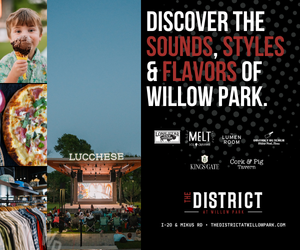How was Joseph Mallord William Turner a modern artist? At a time when British art was struggling with an inferiority complex compared with the rest of Europe, Turner and his rival John Constable were painters that their countrymen wouldn’t hesitate to put up against the finest masters from France or Italy. Turner was also the kind of artist who couldn’t have existed just a few decades before. A barber and wigmaker’s son from London, he won his way to the top by sheer force of talent, never losing his Cockney accent or his love of a pint at the pub despite spending so much time around rich, cultivated people.
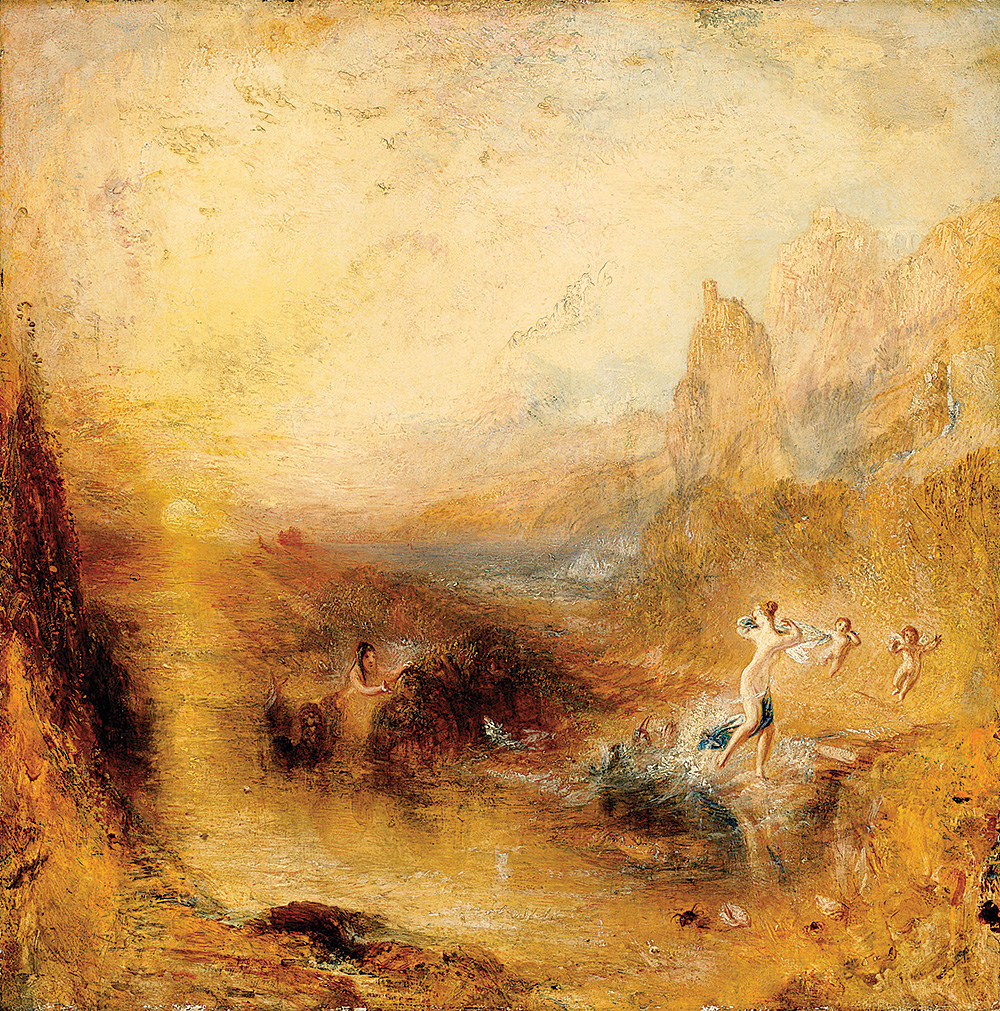
Photo courtesy of Kimbell Art Museum.
However, Turner’s Modern World marks him out as modern by tracing his relationship with the Industrial Revolution, which happened during his lifetime. Turner came up at a time when aesthetics was marked by Edmund Burke’s treatise On the Sublime and Beautiful, in which the Anglo-Irish politician and philosopher declared that the sublime (art that teaches us our insignificance by regarding forces that can destroy us) was superior to the beautiful (art that is pleasing to the senses). Like many other British artists, Turner took this idea and painted large canvases depicting people dwarfed by nature. Unlike his colleagues, Turner was also fascinated by the technological advances of his time. The Kimbell Art Museum’s blockbuster show of this master’s work takes on this latter idea. The basic thesis is convincing, but I’m not sure the exhibit entirely proves its point.
The show was organized by the Tate Britain, which owns more than 10,000 of the artist’s works as a result of his leaving them to the Crown after his death in 1851. Three of Turner’s most famous works (“The Slave Ship,” “Rain, Steam, and Speed,” and “The Fighting Temeraire”) were unable to make the trip to Texas. Too bad about that last one — it would have been cool to sit in front of the same painting that James Bond and Q discussed in Skyfall. Even so, there’s more than enough at the Kimbell to demonstrate Turner’s attitude about the changing world he lived in. His oil painting “Staffa: Fingal’s Cave” was inspired by a steamboat journey to a Scottish island that was turned treacherous by the weather. The boat that carried him and his fellow passengers back to safety cuts a heroic figure amid the storm.

Photo courtesy of Kimbell Art Museum.
On the other hand, Turner’s thrill to his nation’s manufacturing prowess comes packaged with a nostalgia for the old ways that have gone. His painting “War. The Exile and the Rock Limpet” depicts Napoleon, imprisoned on the island of Elba and sadly regarding an aquatic snail that currently enjoys more freedom than he does. The companion work to that is “Peace — Burial at Sea,” whose blues and blacks contrast with the reds and yellows of “War.” That work was inspired by the death of Turner’s professional rival Sir David Wilkie, who took sick while returning from the Middle East and had to be buried in the ocean. With these two paintings, Turner comments on the transitory nature of all things. With “Chichester Canal,” he celebrates the beauty of the then-new canal connecting London to England’s southern coast while also lamenting that railways had made it obsolete even before it opened.
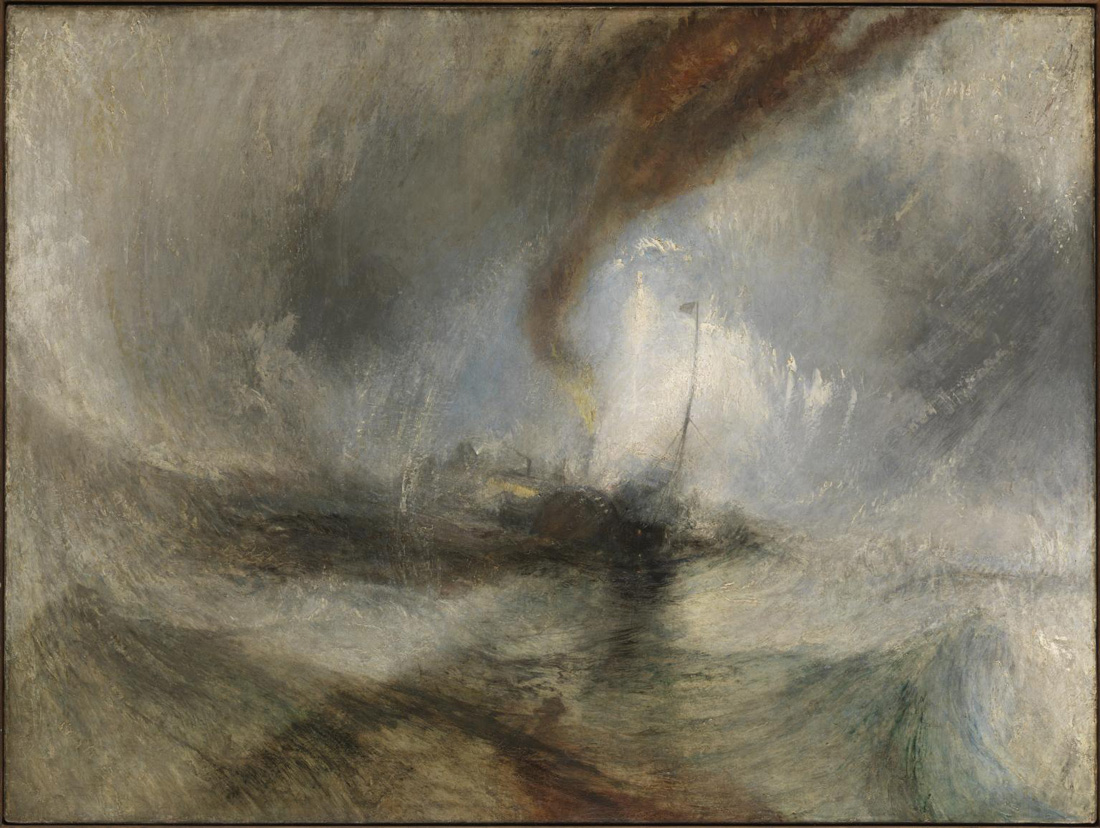
Photo courtesy of Kimbell Art Museum.
This is great, but the exhibit tries to emphasize Turner as a socially aware artist who opposed slavery and lamented the human cost of the Napoleonic Wars. No doubt this was part of his personality, but his art isn’t at its strongest when expressing this. “The Field of Waterloo” and “Snow Storm: Hannibal and His Army Crossing the Alps” are stark in their depiction of armies shrunk to insignificance by coming storms, but they’re nowhere near as piercing as Goya’s war-themed works, which were made around the same time. The museum’s captions depict the unfinished painting of Death on a pale horse titled “The Fall of Anarchy” as a response to the recent Peterloo massacre, but it might just as well have referred to a recent cholera epidemic that killed 55,000 Britons or to the death of Turner’s father, with whom he was particularly close.
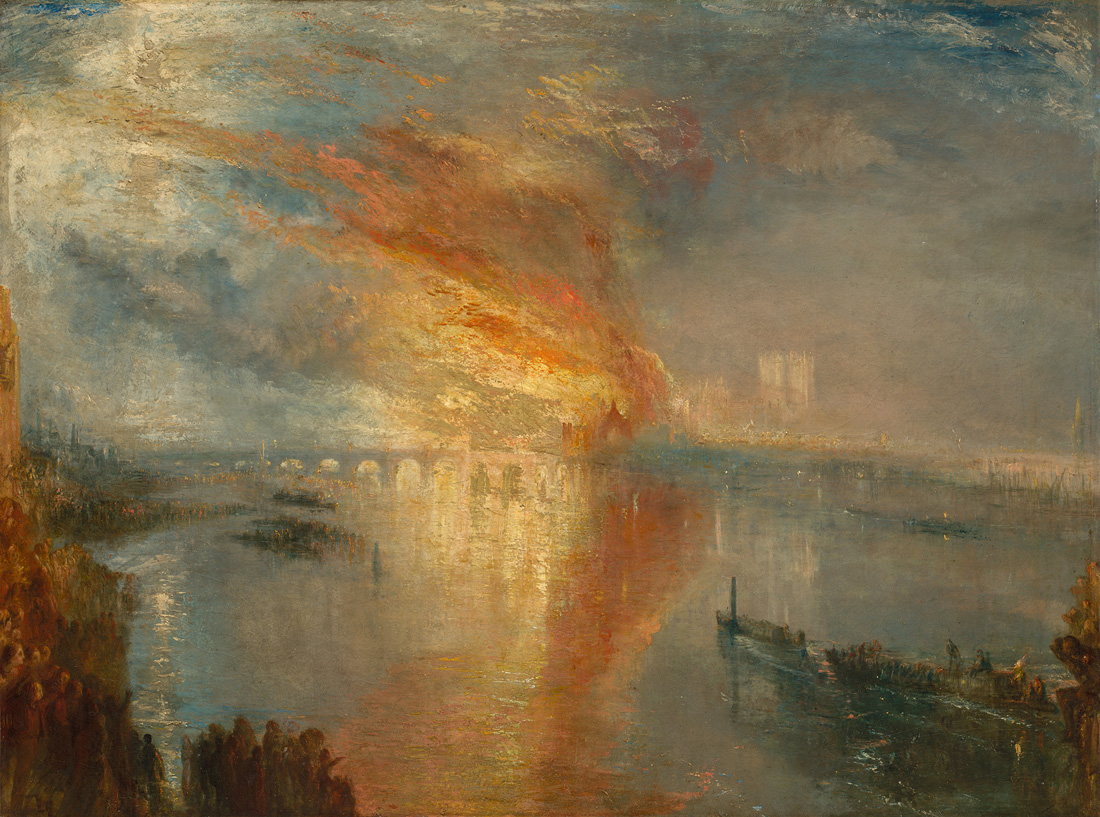
Photo courtesy of Kimbell Art Museum.
What I took away from the show was the old story of Turner being a master of light and color. “The Burning of the Houses of Lords and Commons” was inspired by an 1834 fire that burned down Parliament, which was witnessed by Turner and much of London. That painting is notable not for commenting on the controversial laws that Parliament had just passed but for that big tongue of flame slashing its way across the blue canvas. (By the way, Turner did two paintings of that fire, and somehow both found permanent homes in America. We’re seeing the Cleveland one, not the Philadelphia one.) Turner probably didn’t have a boat’s crew members tie him to a mast so he could paint “Snow Storm: Steam-Boat off a Harbour’s Mouth,” but it’s a masterpiece all the same, with its whirl of black smoke, white snow, and blue water creating an energetic blur that would inspire the Impressionists and abstract artists of later eras. The Kimbell’s own “Glaucus and Scylla” catches the eye with its lurid chrome yellows. Before the 19th century was even half over, here was J.M.W. Turner giving us a disturbing peek at the next one.



